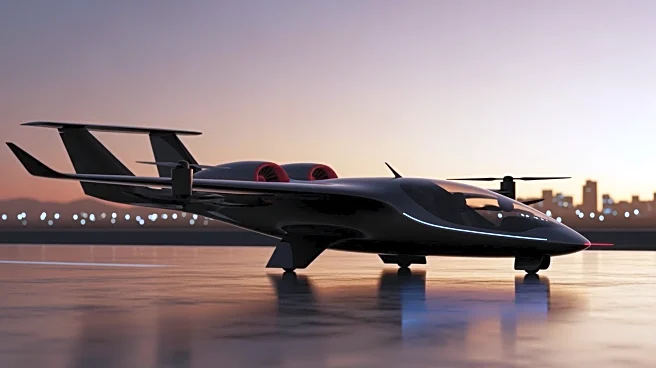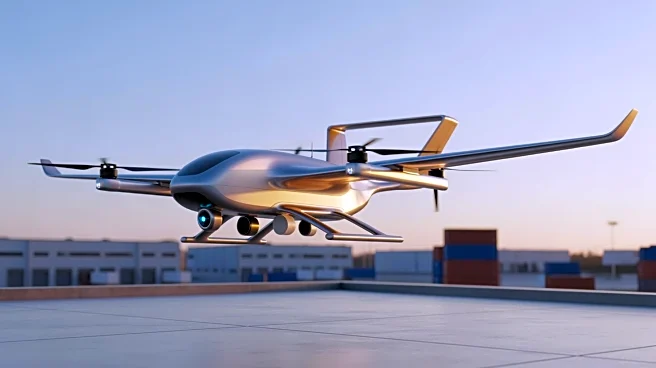What's Happening?
Archer Aviation has successfully completed flight tests of its Midnight electric vertical takeoff and landing (eVTOL) aircraft in the United Arab Emirates. The tests, conducted at Al Ain Airport in Abu
Dhabi, demonstrated the aircraft's capabilities in vertical takeoff, transition, and wingborne flight under UAE-specific conditions. The campaign was coordinated with the UAE's General Civil Aviation Authority and other local entities. Archer's Midnight aircraft is designed to handle challenging weather environments, such as the UAE's sand and heat, and performed as expected across all phases of flight.
Why It's Important?
The successful flight tests of Archer's eVTOL aircraft in the UAE mark a significant milestone in the development of urban air mobility solutions. This advancement supports the UAE's vision of establishing an air taxi network, enhancing transportation options and reducing congestion in urban areas. The tests also highlight the potential for eVTOL technology to operate in diverse environmental conditions, paving the way for broader adoption in other regions. The collaboration with local authorities underscores the importance of regulatory support in advancing innovative transportation technologies.
What's Next?
Following the successful tests, Archer plans to begin commercial operations with its Midnight aircraft in Abu Dhabi, contributing to the emirate's air taxi network development. The company is also working on pilot training programs in collaboration with Etihad Aviation Training. As the UAE continues to invest in urban air mobility infrastructure, further regulatory discussions and partnerships are expected to facilitate the integration of eVTOL services into the existing transportation ecosystem.
Beyond the Headlines
The introduction of eVTOL aircraft in the UAE could revolutionize urban transportation, offering faster and more efficient travel options. This development raises considerations about airspace management, safety protocols, and public acceptance of new technologies. The success of such initiatives could influence other countries to explore similar solutions, potentially leading to a global shift towards sustainable urban mobility.











